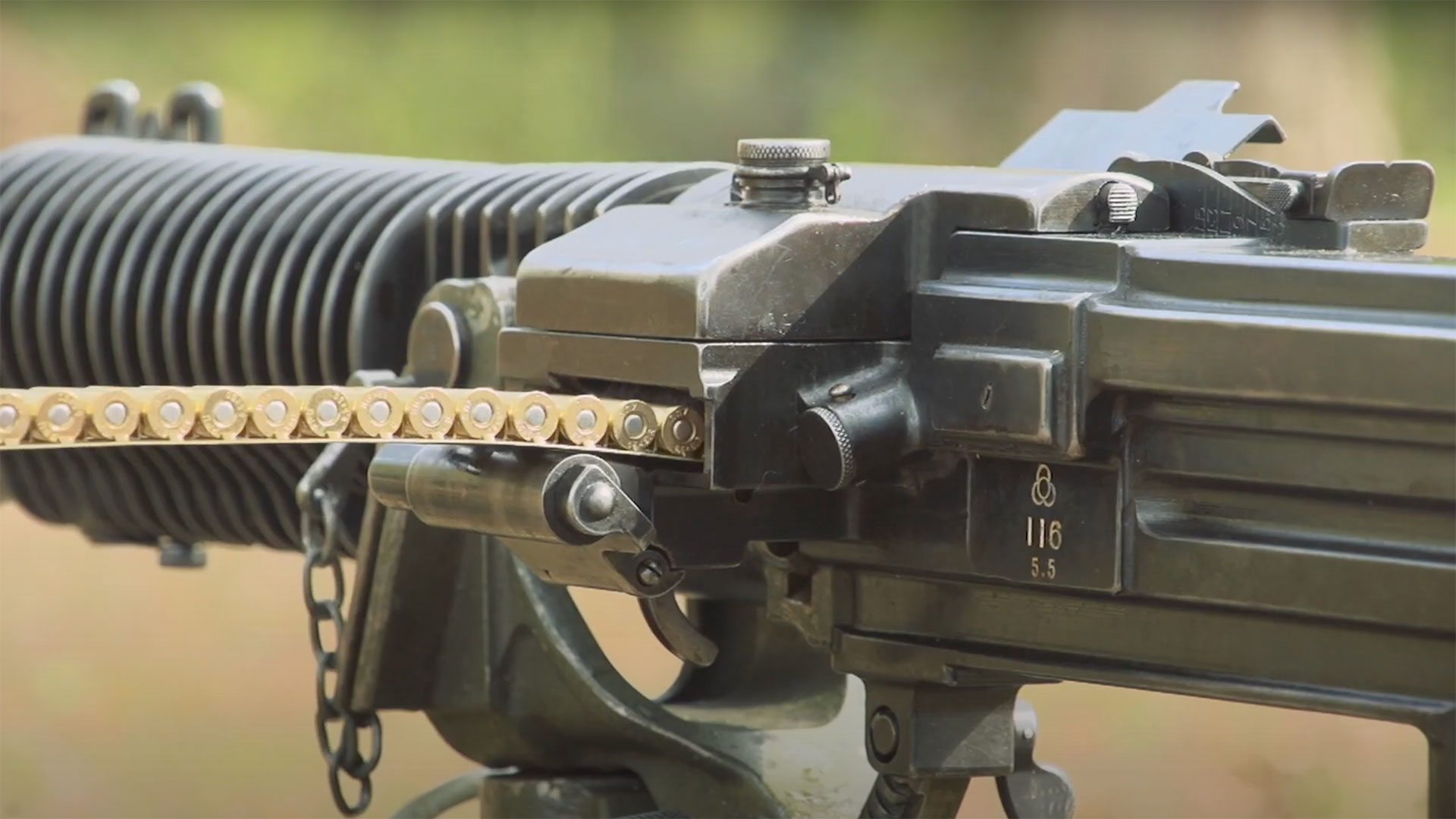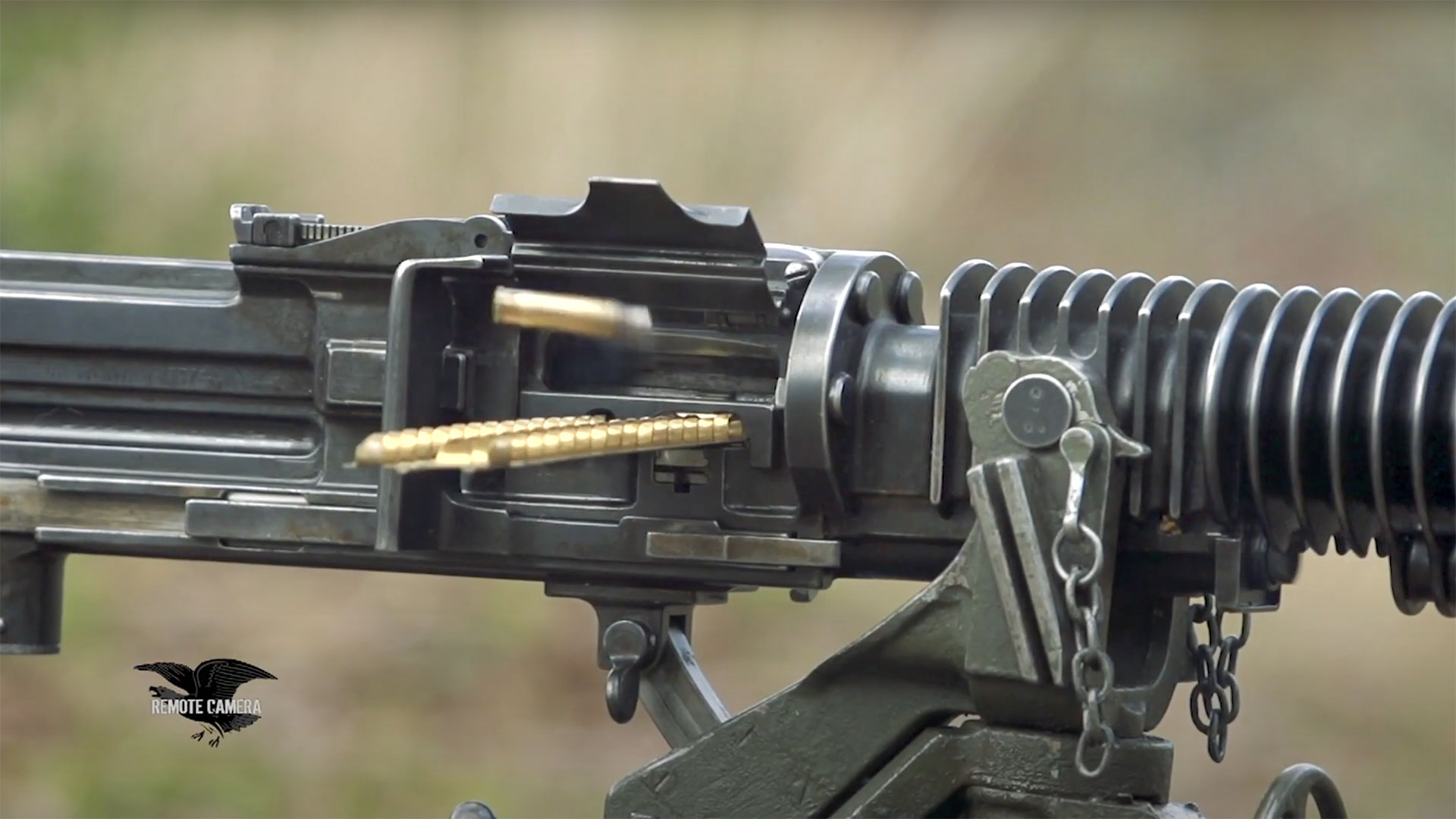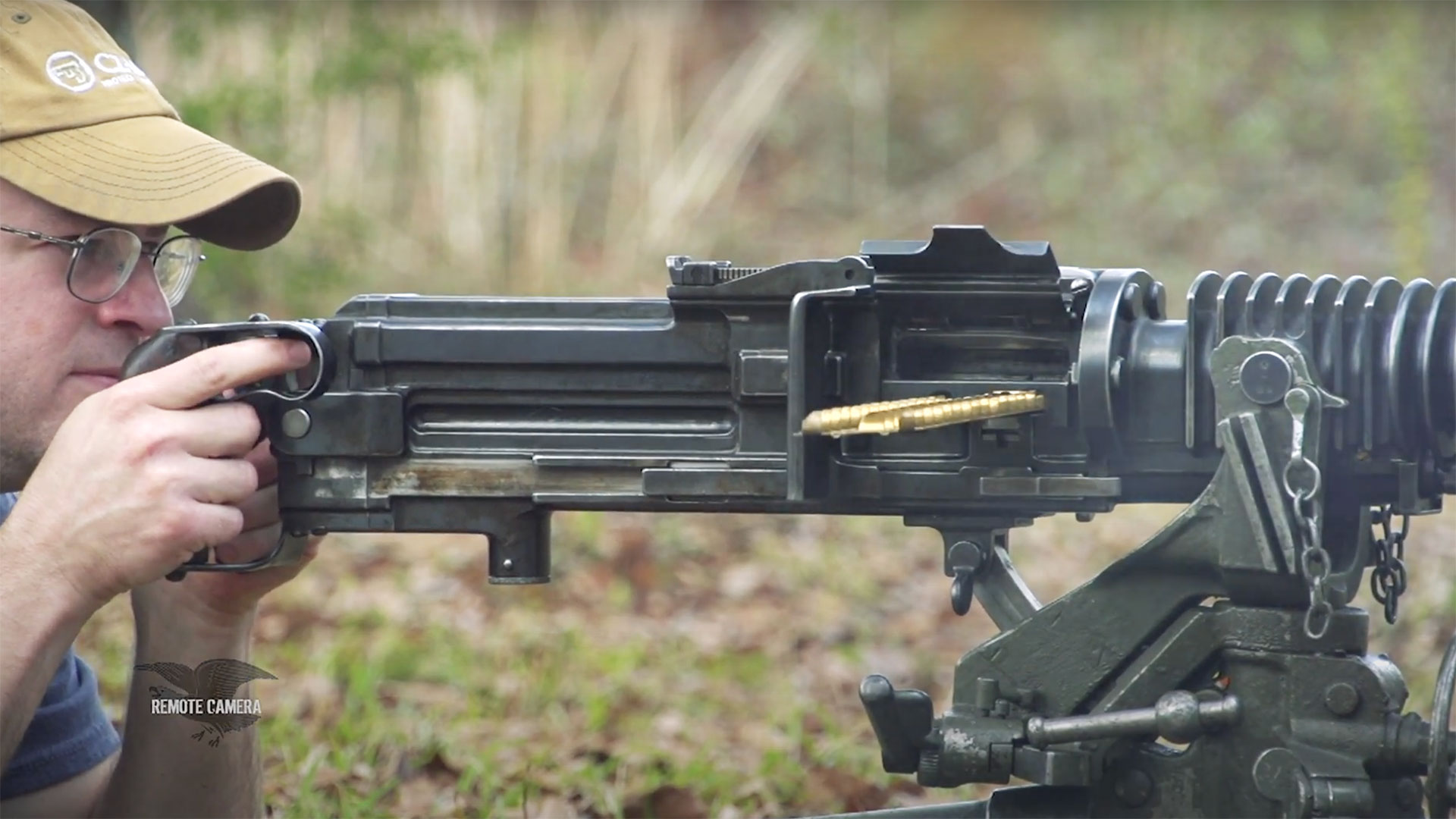As Imperial Japan made efforts to modernize its military prior to World War I, it looked to the designs of other world powers for inspiration in developing its own modern arms. In 1914, Japanese designer Kijiro Nambu developed his own variation of the French-made Hotchkiss M1914 heavy machine gun for the Japanese army. Called the Type 3, it is a large, crew-served machine gun, which uses a Hotchkiss-style gas and feed tray system. Instead of using belts, ammunition is fed into the action through the use of 30-round feed strips, which are made out of stamped brass.

A strip is inserted into the feed insert on the left side of the action, and as the Type 3 fires, it advances the strip through the receiver as it pulls, chambers and ejects cartridges. Once all ammunition in a strip is fired, the empty strip simply falls out on the right side. Much like other Japanese small arms based off of foreign technology of the time, the Type 3 has several distinct differences in appearance and design details compared to the Hotchkiss. These include two handles at the rear of the receiver, an integrated oiler on top of the feed tray to lubricate ammunition as it is fed into the action as well as a large and distinctive ribbed barrel and barrel shroud.

The Type 3 is supported by a large tripod system, which provides a sturdy base and also facilitates the ability to raise, lower and lock the height and traverse of the gun. Combined with the tripod system, the Type 3 weighs in at more than 120 lbs. Due to this great weight, the tripod is designed to allow large carry handles to at three points, allowing relative ease of transport by the crew without having to separate the gun from the mount. Due in part to its 6.5x50 mm chambering, slow rate of fire under 600 rounds per minute and the weight of the combined tripod and gun, the Type 3 proved to be a very stable and accurate platform, with little barrel movement during sustained fire. The slow rate of fire and large 30" barrel also allows the system to maintain automatic fire for extended periods without excessive overheating.

Adopted in 1914, the Type 3 proved successful in Japanese service, being the primary heavy machine gun in the Imperial Japanese army up to 1932. The Type 3 proved so successful in Japanese service that its successor was the same design, called the Type 92 (or "Woodpecker" as nicknamed by Allied soldiers), re-chambered for the 7.7x58 mm cartridge. Even though Japan moved on to the 7.7 mm chambering by the mid-1930s, the 6.5 mm weapons, including the Type 3, saw continued use with Japanese forces all the way up to the end of World War II.
To watch complete segments of past episodes of American Rifleman TV, go to americanrifleman.org/artv. For all-new episodes of ARTV, tune in Wednesday nights to Outdoor Channel 8:30 p.m. and 11:30 p.m. EST.






















